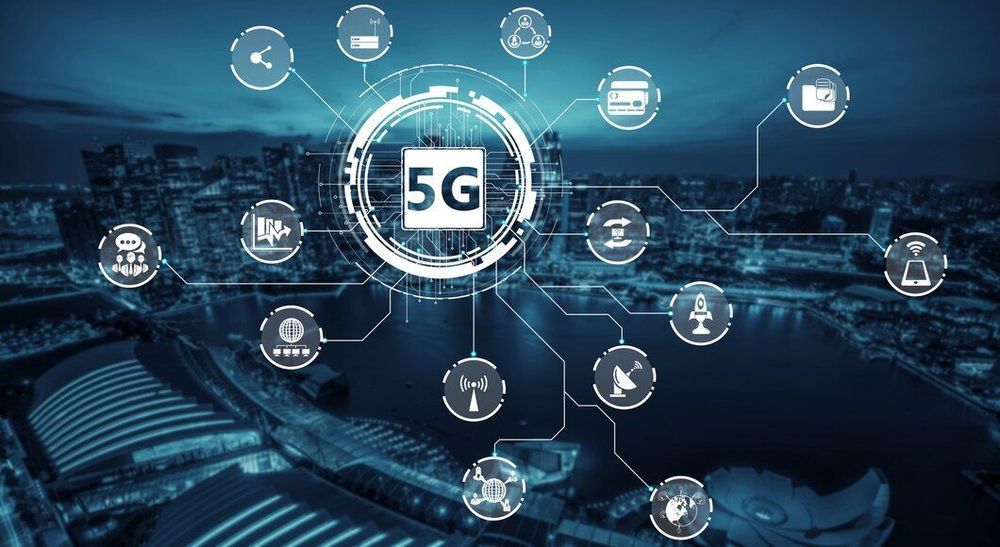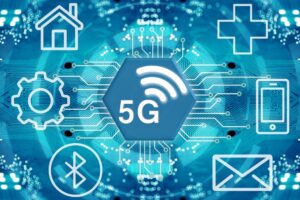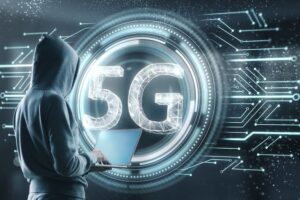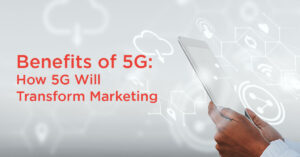The advent of 5G technology is poised to reshape the future of communication in ways we could have only dreamed of just a decade ago. With promises of ultra-fast speeds, low latency, and massive connectivity, 5G is expected to transform how we connect, work, and live. The rollout of this fifth-generation mobile network is already underway, and its impact is expected to be far-reaching, extending beyond just smartphones to influence everything from healthcare and education to transportation and entertainment. In this article, we’ll explore how 5G will revolutionize the future of communication, offering enhanced capabilities and giving rise to new possibilities.
What Is 5G Technology?
Before diving into how 5G will revolutionize communication, it’s important to understand what it is and how it differs from previous generations of mobile networks.
5G is the fifth generation of mobile network technology, succeeding 4G (LTE). It promises to deliver speeds up to 100 times faster than 4G, ultra-low latency (the time it takes for data to travel from the source to the destination), and a vastly increased number of connected devices.
The key features of 5G technology include:
- High Speed: With download speeds of up to 10 gigabits per second, 5G will allow for faster data transfer and near-instant communication.
- Low Latency: 5G offers latency as low as 1 millisecond, making real-time communication, such as video calls and virtual interactions, feel instantaneous.
- Massive Connectivity: 5G supports up to 1 million devices per square kilometer, enabling seamless connectivity for the Internet of Things (IoT) and a more interconnected world.
- Enhanced Reliability: 5G networks will be more reliable, ensuring stable connections even in high-demand environments.
These features combine to create an infrastructure capable of supporting a wide range of applications, many of which were not feasible with earlier generations of mobile networks.
How Will 5G Enhance Communication in Everyday Life?
Revolutionizing Mobile Communication
The most immediate impact of 5G technology will be on mobile communication. With significantly faster speeds and more stable connections, mobile phones will become even more powerful tools for staying connected.
- Ultra-Fast Video Streaming: With 5G, users will be able to stream high-definition (HD) and even 4K videos without any buffering or lag. This will be especially beneficial for entertainment platforms like Netflix, YouTube, and social media.
- Seamless Video Calls and Conferencing: 5G will enhance video calls by reducing latency, making conversations feel more natural. Whether you’re on a one-on-one call or participating in a virtual meeting, the experience will be more immersive with clearer video and better sound quality.
- Enhanced AR and VR Communication: Augmented reality (AR) and virtual reality (VR) applications will thrive on 5G networks, enabling highly interactive experiences. For example, virtual meetings could be conducted in fully immersive environments, where participants feel as if they are physically in the same room.
Enabling Real-Time Communication in Remote Areas
5G technology will also enable high-quality communication in areas that were previously underserved by mobile networks. This will allow people in rural or remote areas to access real-time communication tools, bridging the digital divide.
- Remote Work and Collaboration: As remote work continues to grow, 5G will facilitate seamless collaboration between teams and individuals around the world. The ultra-low latency will make communication more efficient, and faster download/upload speeds will allow large files to be shared in an instant.
- Telemedicine and Virtual Healthcare: In healthcare, 5G will enable telemedicine consultations with high-quality video and the transfer of large medical files in real-time. This will be particularly valuable for patients in remote locations who may not have easy access to healthcare providers.
Empowering the Internet of Things (IoT)
One of the most exciting aspects of 5G is its ability to connect an enormous number of devices simultaneously. With the expansion of the Internet of Things (IoT), millions of everyday devices will be able to communicate with each other, leading to smarter homes, cities, and industries.
- Smart Cities: In a 5G-enabled smart city, traffic lights, street sensors, waste management systems, and other infrastructure elements will be interconnected, allowing for real-time updates and more efficient operations. For example, 5G can enable smart traffic management systems that adjust traffic light timing based on real-time traffic conditions.
- Connected Homes: Smart homes will become more responsive and efficient with the advent of 5G. Devices like smart thermostats, lights, refrigerators, and security systems will be able to communicate instantly with each other, creating a seamless living environment for homeowners.
How Will 5G Transform Business Communication?
Improving Communication in the Workplace
5G technology will transform how businesses communicate both internally and externally. As organizations become increasingly global and digital, fast and reliable communication will be essential for smooth operations.
- Cloud-Based Communication Tools: Cloud services that rely on real-time data transfer will work much faster and more efficiently on 5G networks. Tools like Google Meet, Microsoft Teams, and Slack will benefit from reduced lag, more stable connections, and improved video and audio quality during virtual meetings.
- Remote Work and Collaboration: For remote workers and teams spread across the globe, 5G will ensure seamless collaboration with ultra-fast file transfers and live video feeds. This will make virtual meetings feel more like in-person interactions, improving communication and productivity.
- Enhanced Customer Service: Businesses can use 5G to improve their customer service offerings. For instance, 5G-enabled chatbots and virtual assistants can provide instant responses to customer queries, while AI-driven systems can process large amounts of customer data in real-time to provide personalized experiences.
Enabling New Business Models
The low latency and high speeds of 5G will empower businesses to experiment with new, innovative business models that rely on real-time communication and massive device connectivity.
- Autonomous Vehicles: With 5G, the development of autonomous vehicles will be accelerated. These vehicles will rely on real-time communication between cars, traffic systems, and infrastructure to navigate safely and efficiently. This will not only revolutionize the transportation industry but also open up new opportunities for businesses in sectors such as logistics, delivery, and urban planning.
- Remote Operations and Industry 4.0: In manufacturing and other industries, 5G will enable remote operations and real-time monitoring of machines, devices, and processes. This will improve operational efficiency, reduce downtime, and enable predictive maintenance through real-time data collection and analysis.
The Role of 5G in Education and Learning
Enhanced Remote Learning
The education sector will also see significant improvements thanks to 5G technology. With higher speeds and better connectivity, remote and online education will be more interactive and immersive.
- High-Quality Streaming: Students in remote locations will be able to participate in live-streamed lectures with high-definition video and real-time interactions. This will improve the learning experience by allowing teachers and students to engage more effectively.
- Virtual and Augmented Reality: With the bandwidth provided by 5G, educational institutions can use AR and VR technologies to create immersive learning experiences. For example, medical students could perform virtual surgeries, or history students could take virtual field trips to ancient landmarks.
Global Access to Learning Resources
5G has the potential to bridge the digital divide in education. Students in underserved regions, where reliable internet access has been a barrier, will be able to access high-quality educational resources and collaborate with peers globally, regardless of their location.
- Global Collaboration: Students from different parts of the world will be able to collaborate on projects in real-time, fostering cross-cultural learning and global problem-solving. 5G’s ability to connect large numbers of users simultaneously will make global classrooms a reality.
5G’s Impact on Healthcare and Telemedicine
Improved Remote Patient Monitoring
5G will drastically improve telemedicine and remote healthcare services, allowing for faster data transfers and real-time communication between patients and healthcare providers.
- Remote Consultations: Doctors and specialists will be able to consult with patients in real-time using high-quality video calls. This is especially beneficial for patients living in rural or remote areas who may not have easy access to medical professionals.
- Real-Time Health Monitoring: Wearable health devices will be able to transmit data to doctors instantly, enabling real-time monitoring of vital signs, blood sugar levels, heart rates, and more. This can help detect health issues early, potentially saving lives.
Surgical Advancements
Surgeons will be able to perform remote surgeries using robotic systems that are controlled over 5G networks. This level of precision and real-time communication could allow specialists to perform surgeries in locations far from their physical presence, making advanced healthcare more accessible.
Challenges and Considerations of 5G Technology
While 5G promises to revolutionize communication, it also comes with its own set of challenges and considerations:
- Infrastructure and Costs: Building the infrastructure required for 5G networks will be costly and time-consuming. The rollout of 5G will need to be carefully managed to ensure that rural and underserved areas are not left behind.
- Security and Privacy Concerns: With the increased connectivity and the proliferation of IoT devices, 5G networks will need to address security and privacy concerns. The more devices connected to the network, the more opportunities there are for cyberattacks, making robust security measures essential.
- Health Concerns: There are some concerns about the potential health effects of 5G radiation, although studies have not confirmed any direct risks. Continued research and regulation will be necessary to ensure that 5G networks are safe for public use.
Conclusion
5G technology is set to revolutionize the future of communication by providing faster speeds, lower latency, and the ability to connect millions of devices simultaneously. From enhancing mobile communication and transforming business operations to enabling advancements in healthcare, education, and entertainment, the potential applications of 5G are vast and exciting. While challenges remain, the widespread adoption of 5G will undoubtedly pave the way for more efficient, reliable, and interactive communication in the years to come. As we move into this new era of connectivity, 5G will not only change how we communicate but also redefine how we live, work, and interact with the world around us.




